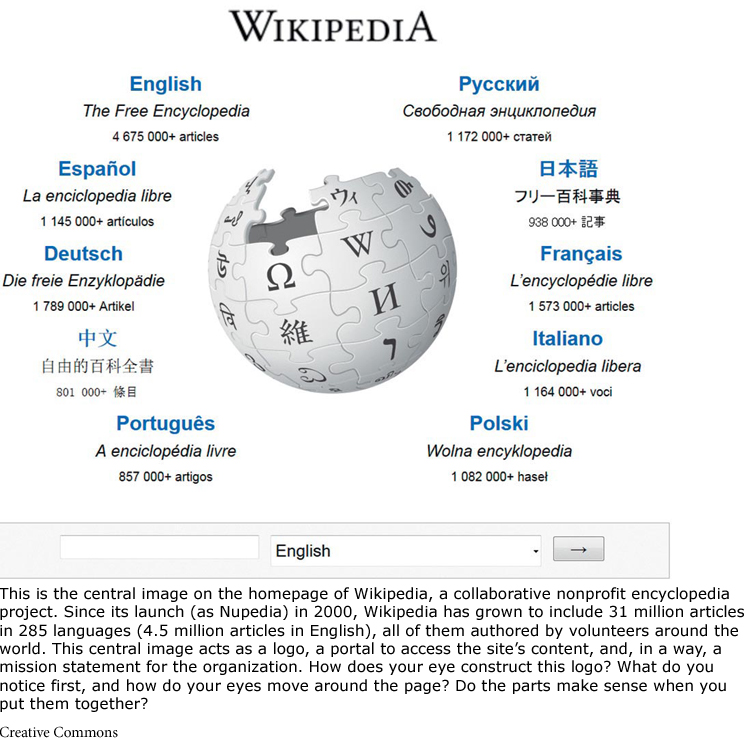Analyzing Multimedia Arguments
Analyzing Multimedia Arguments
As the previous section suggests, a multimedia argument can be complex. But you can figure it out by giving careful attention to its key components: the creators and distributors; the medium it uses; the viewers and readers it hopes to reach; its content and purpose; its design. Following are some questions to ask when you want to understand the rhetorical strategies in arguments and interactions you encounter in social media or on blogs, Web sites, or other nontraditional media. It’s worth noting that the questions here don’t differ entirely from those you might ask about books, journal articles, news stories, or print ads when composing a rhetorical analysis (see Chapter 6).
Questions about Creators and Distributors
Who is responsible for this multimedia text? Did someone else distribute, repurpose, or retweet the item?
What can you find out about these people and any other work they might have done?
What does the creator’s attitude seem to be toward the content: serious, ironic, emotionally charged, satiric, comic? What is the attitude of the distributor, if different from the creator?
What do the creator and the distributor expect the effects of the text or posting to be? Do they share the same intentions? (Consider, for example, that someone might post an item in order to mock or criticize it.)
Questions about the Medium
Which media are used by this text? Images only? Words and images? Sound, video, animation, graphs, charts? Does the site or environment where the text appears suggest a metaphor: photo album, pin-up board, message board, chat room?
In what ways is this text or its online environment interactive? Who can contribute to or comment on it? Where can an item be sent or redirected? How did it get to where you encountered it?
How do various texts work together in the site? Do they make arguments? Accumulate evidence? Provide readers with examples and illustrations?
What effect does the medium have on messages or items within it? How would a message, text, or item be altered if different media were used?
Do claims or arguments play an explicit role in the medium? How are they presented, clarified, reinforced, connected, constrained, or commented upon?
369
Questions about Audience and Viewers
What are the likely audiences for the text or medium? How are people invited into the text or site? Who might avoid the experience?
How does the audience participate in the site or platform? Does the audience respond to content, create it, or something else? What audience interactions or connections occur there? Can participants interact with each other?
How does the text or media site evoke or reward participation? Are audience members texted or emailed about events or interactions in the site?
Questions about Content and Purpose
What purpose does the multimedia text achieve? What is it designed to convey?
What social, cultural, or political values does the text or site support? Cultural interaction? Power? Resistance? Freedom?
Does the text, alone or in reaction to others, reinforce these values or question them? Does the text constitute an argument in itself or contribute to another claim in some way — as an illustration, example, exception, metaphor, analogy?
What emotions does the multimedia site or text evoke? Are these the emotions that it intends to raise? How does it do it?
Questions about Design
How does the site present itself? What draws you to it? How easy is the environment to sign up for, learn, or use?
How is the multimedia text or environment structured? Does the structure enhance its purpose or functionality? If it presents data, is the information easy to understand? (See also Chapter 14, “Visual Rhetoric.”)
How are arguments, concepts, or ideas presented or framed within the text or environment? How are ideas identified? How are they amplified or connected to other supporting texts and ideas?
What details are emphasized in the text or media environment? What details are omitted or de-emphasized? To what effect? Is anything downplayed, ambiguous, confusing, distracting, or obviously omitted? Why?
What, if anything, is surprising about the design of the text or environment? What do you think is the purpose of that surprise?
How are you directed to move within the text or site? Are you encouraged to read further? Click on links? Contribute links and information?
370
RESPOND •
Using the discussion of multimedia arguments in this chapter and the questions about multimedia texts and platforms above, find a multimedia text that makes an intriguing argument or a social media platform where you sometimes encounter debates about political and social issues. Then write a brief rhetorical analysis of the text or the site, focusing more on the way the messages are conveyed than on the messages that are in play.
Click to navigate to this activity.
